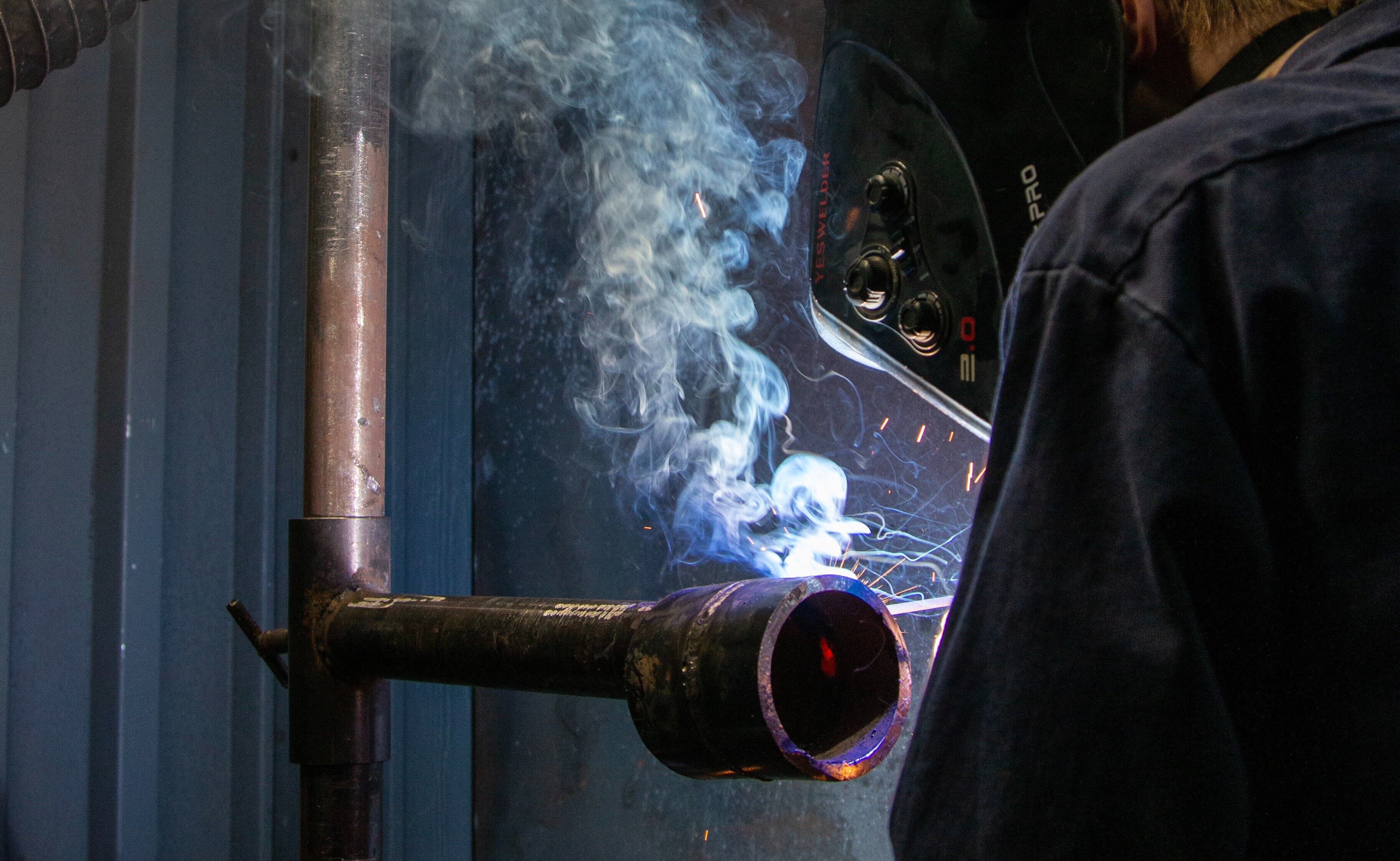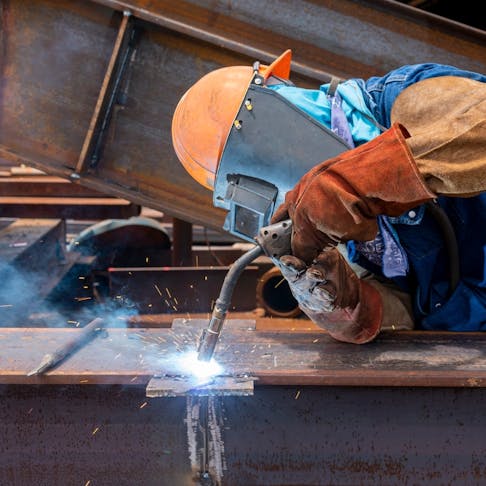Common problems explained and solved by Montana Mobile Welding and Repair Belgrade Fabrication
Typical Welding Repair Issues and Exactly How to Address Them Efficiently
Welding repair services often encounter a variety of issues that can jeopardize the honesty of the final product. Usual issues consist of inadequate infiltration, porosity, and imbalance, amongst others. Each problem provides special difficulties that call for details strategies for resolution. Recognizing these issues is essential for welders intending to improve their abilities and results. This conversation will discover these typical welding repair service concerns and reliable approaches to address them.
Inadequate Penetration
Poor infiltration takes place when the weld steel falls short to fully fuse with the base material, resulting in weak joints and possible architectural failures. This issue frequently stems from not enough heat input, incorrect electrode angle, or inappropriate welding rate. Welders might experience inadequate infiltration as a result of a mistake of the necessary criteria for a particular material thickness or type. Additionally, contamination on the base product's surface can hinder reliable bonding, aggravating the trouble. To resolve insufficient infiltration, welders need to ensure appropriate settings on their tools and maintain a clean work surface. Regular assessment of welds is recommended to recognize any kind of deficiencies early, enabling prompt adjustments and the prevention of jeopardized structural honesty in welded settings up.
Porosity
Porosity is a common flaw in welded joints that manifests as small gas bubbles trapped within the weld metal. This defect can compromise the honesty of the weld, causing minimized stamina and potential failure under anxiety. Montana Mobile Welding and Repair Belgrade Welding. Porosity normally emerges from contamination, wetness, or improper welding methods, which enable gases to escape right into the liquified weld swimming pool. To deal with porosity, welders ought to assure proper surface preparation, maintain a tidy functioning setting, and utilize appropriate welding parameters. Additionally, picking the appropriate filler material and shielding gas can mitigate gas entrapment. Routine assessment and screening of welds can help recognize porosity early, guaranteeing prompt corrective actions are taken, consequently preserving the high quality and dependability of the bonded framework
Imbalance
Imbalance in welding can emerge from different aspects, consisting of inappropriate setup and thermal development. Recognizing the source is vital for effective resolution. A number of correction techniques are readily available to straighten parts and assure architectural integrity.
Reasons of Imbalance
Welding imbalance usually comes from a range of underlying problems that can jeopardize architectural integrity. One key cause is inappropriate fit-up of components before welding, which can result in spaces and irregular surface areas. Variations in thermal development during the welding process can also result in distortion, specifically if the products being joined have different coefficients of growth. In addition, insufficient clamping and fixturing may fail to hold parts firmly in position, causing activity throughout welding. Inadequately maintained tools, consisting of welding devices and devices, may introduce inconsistencies in the weld grain, more adding to misalignment. Operator error, stemming from inadequate training or experience, can additionally play a substantial duty in developing misaligned welds.

Adjustment Strategies Offered
Resolving misalignment efficiently requires a combination of corrective methods tailored to the certain issues available. One typical technique is the use of fixtures or jigs to hold elements in the right position throughout welding, making sure constant placement. Additionally, pre-heating the materials can help decrease distortion and improve fit-up. For substantial misalignment, mechanical realignment techniques, such as making use of hydraulic jacks or clamps, can be employed to deal with the placement before welding. Post-weld warmth therapy may additionally be needed to soothe stress and anxieties brought on by misalignment. Lastly, mindful evaluation and modification throughout the configuration stage can avoid misalignment concerns from ending up being considerable problems, advertising a smoother welding process and boosting total architectural honesty.
Distortion
Distortion is a common challenge in welding that can emerge from numerous factors, including irregular cooling and heating. Recognizing the reasons for distortion is essential for applying reliable prevention methods. Addressing this issue not only enhances architectural stability but additionally enhances the overall high quality of the weld.
Reasons for Distortion
When based on the intense warmth of welding, materials typically go through adjustments that can bring about distortion. This phenomenon largely emerges from thermal expansion and contraction throughout the welding process. As the weld area warms up, the product increases; upon air conditioning, it gets, which can create internal stress and anxieties. Additionally, unequal heating throughout a workpiece can intensify these stress and click here anxieties, leading to bending or flexing. The sort of product also plays a considerable role; metals with varying thermal conductivity and coefficients of growth might react in a different way, leading to unforeseeable distortions. Inadequate joint layout and inadequate fixturing can contribute to imbalance during welding, boosting the chance of distortion. Recognizing these causes is necessary for efficient welding repair and avoidance approaches.
Prevention Techniques
Effective avoidance strategies for distortion during welding emphasis on regulating heat input and making sure correct joint design. Keeping a regular warm input aids to minimize thermal growth and contraction, which can bring about distortion. Making use of techniques such as preheating the workpiece can additionally decrease the temperature level slope, promoting consistent heating. Furthermore, choosing ideal joint designs, such as T-joints or lap joints, can improve security and minimize tension concentrations. Executing proper fixturing to safeguard the workpieces in position additionally aids in keeping alignment throughout the welding process. Lastly, staggered welding series can distribute warmth more uniformly, stopping localized distortion. By using these methods, welders can significantly lower the probability of distortion and boost the total quality of their welds.
Splitting
Breaking is an usual issue experienced in welding fixings, commonly resulting from different variables such as incorrect cooling rates, product option, or inadequate joint prep work. The occurrence of splits can considerably endanger the integrity of the weld, leading to possible failings throughout procedure. To address this issue, welders have to initially analyze the root creates, making sure that materials work and suitably picked for the certain application. Additionally, regulating the air conditioning price throughout the welding procedure is important; fast cooling can cause anxiety and lead to splitting. Appropriate joint design and preparation also add to decreasing the danger. Carrying out these techniques can boost weld top quality and durability, eventually reducing the probability of cracking in ended up weldments.

Insufficient Blend
A significant issue in welding fixings is incomplete combination, which takes place when the weld metal does not properly bond with the base product or previous weld passes - Montana Mobile Welding and Repair Fabrication. This flaw can result in weaknesses in the joint, possibly endangering the honesty of the bonded structure. Elements adding to insufficient fusion include not enough warmth input, inappropriate welding technique, and contamination of the surface areas being joined. To address this problem properly, welders ought to ensure appropriate pre-weld cleansing and surface preparation, as well as adjust their welding parameters to accomplish appropriate infiltration and fusion. Normal assessment throughout the welding process can additionally help identify insufficient combination early, enabling timely rehabilitative measures to improve the total top quality of the weld
Overheating
While welding repair services can enhance structural stability, overheating offers a significant difficulty that can result in product deterioration. Too much warm throughout welding can alter the mechanical properties of steels, leading to decreased stamina, raised brittleness, and warping. This sensation is especially critical in high-stress applications where structural dependability is paramount. Recognizing getting too hot can include visual evaluations for staining or distortion, as well as keeping an eye on temperature level throughout the welding procedure. To reduce the dangers related to overheating, welders need to utilize appropriate methods, such as managing warmth input, readjusting travel speed, and making use of suitable filler materials. In addition, executing pre- and post-weld heat treatments can assist bring back material properties and boost the general top quality of the fixing, guaranteeing long-lasting performance and safety.
Regularly Asked Inquiries
What Are the Common Signs of a Welding Defect?

Just How Can I Check My Welds for Top quality?
To test welds for quality, one can use aesthetic evaluations, ultrasonic testing, and radiographic techniques. Each method assures architectural stability, recognizes issues, and verifies adherence to defined requirements, eventually improving the integrity of the welded joints.
What Safety Precautions Should I Take While Welding?
When welding, one ought to focus on safety and security by using proper personal protective equipment, making certain proper air flow, safeguarding flammable materials away, preserving a clean work area, and knowing surroundings to stop injuries and accidents.
Can I Repair a Weld Without Redesigning the Entire Joint?
Fixing a weld without renovating the entire joint is possible, depending upon the damage (Belgrade). Techniques such as grinding, including filler product, or utilizing a welding process can effectively deal with certain problems while maintaining the bordering structure
What Equipment Are Crucial for Effective Welding Repair Works?
Crucial tools for effective welding repair services include a welding machine, cord brush, grinder, protective equipment, clamps, and filler products. Each tool plays a crucial role in guaranteeing top quality and safety and security throughout the repair work procedure. Porosity commonly develops from contamination, wetness, or incorrect welding strategies, which allow gases to get away right into the liquified weld swimming pool. Badly maintained tools, including welding devices and devices, might introduce inconsistencies in the weld bead, more adding to misalignment. When subjected to the extreme warm of welding, materials typically undertake changes that can lead to distortion. Breaking is a typical concern run into in welding repair services, usually resulting from numerous factors such as improper air conditioning prices, material selection, or insufficient joint preparation. A substantial issue in welding repair services is incomplete fusion, which occurs when the weld steel does not adequately bond with the base product or previous weld passes.